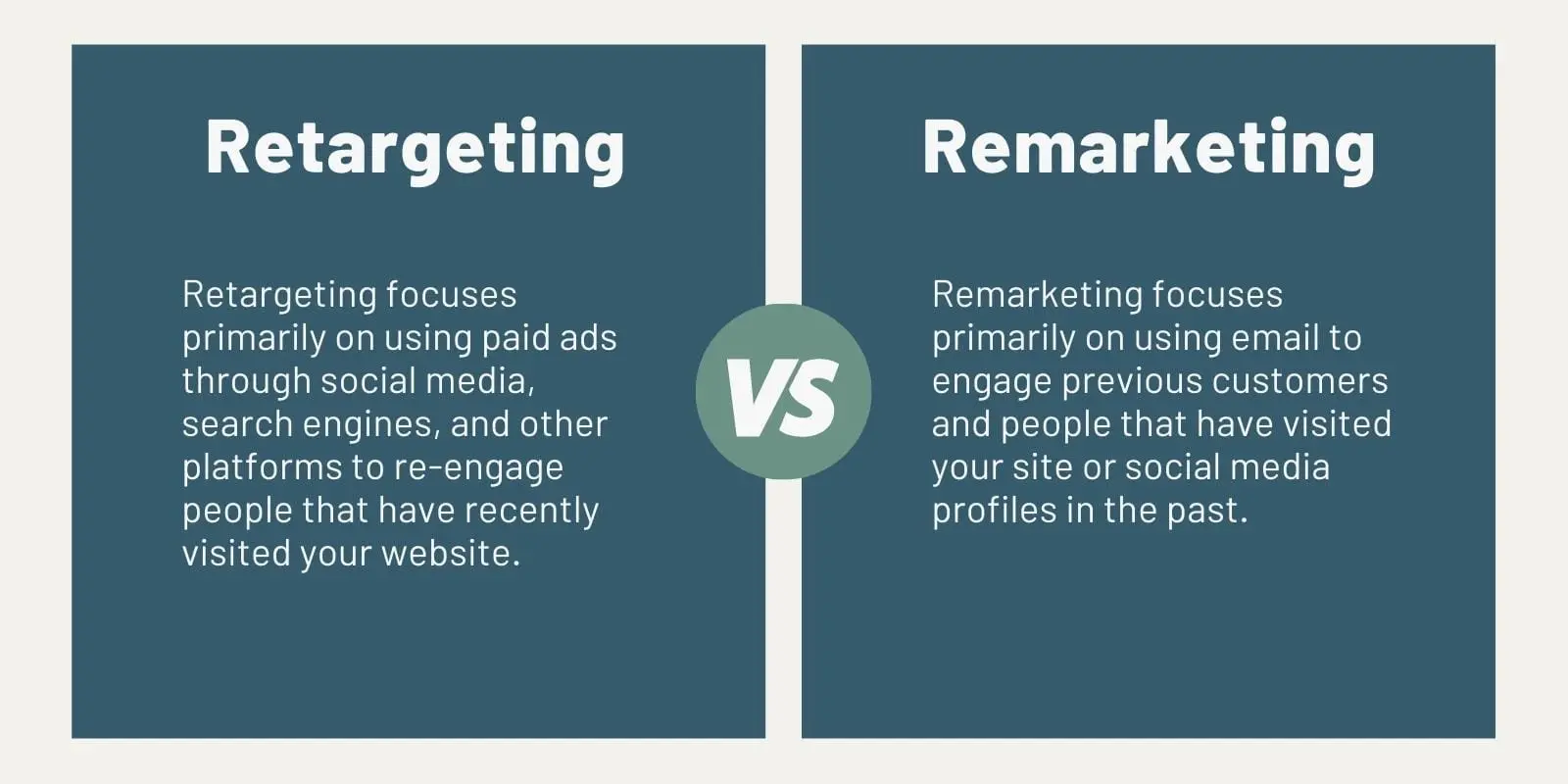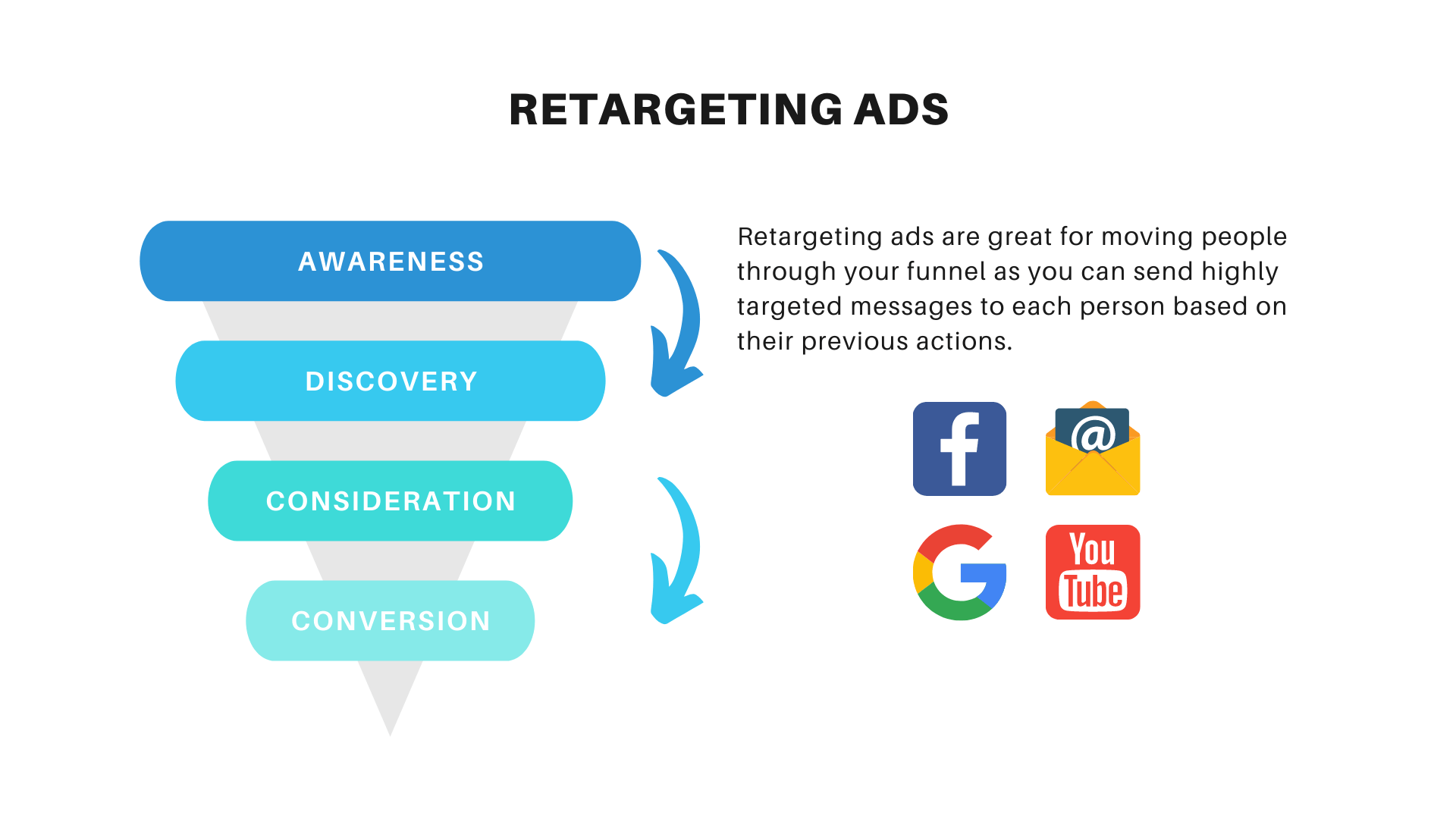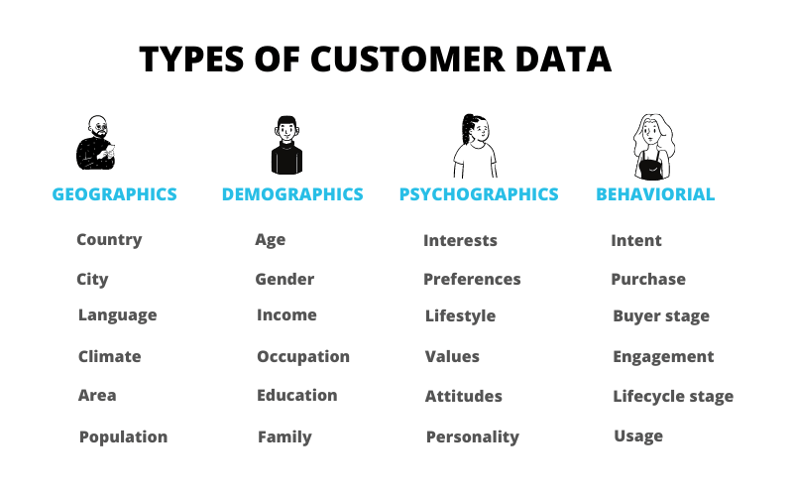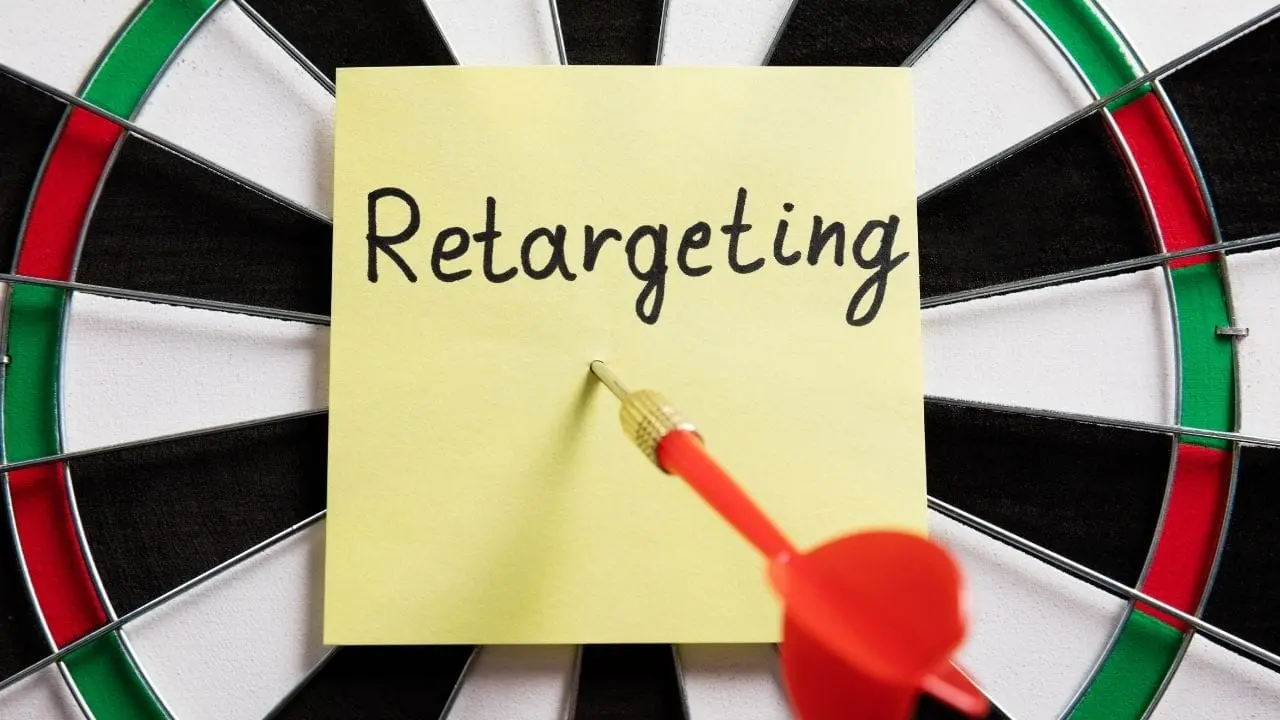Retargeting and remarketing are marketing strategies that allow businesses to connect with their past audiences.
Many view the terms as one and the same but they do have their differences.
In this post, we will break down the difference between retargeting and remarketing and when it is best to use each for your business.
Remarketing vs retargeting
The difference between remarketing and retargeting is how the two marketing tactics are used to achieve their intended objective of getting your business in front of people who have engaged with you in the past.
Retargeting focuses primarily on using paid advertisements through paid media, social media, search engines, and other platforms to re-engage people that have recently visited your website.
Companies can track who visits their site and the actions they perform to immediately add them to retargeting ad campaigns.
In contrast, remarketing focuses primarily on using email to engage previous customers and people that have visited your site or social media profiles in the past.
The process usually involves creating lists that include the information of customers to include in the remarketing campaign.
While the primary use of remarketing is email, it can also be done using paid ads. With popular advertising platforms like Google and Facebook, you can upload a list of specific users to remarket to with your ad campaigns.
Advertising platforms don’t make a clear distinction between the two terms. This helps increase the confusion and assumption that the two concepts are one and the same.

What is Remarketing?
Remarketing is a marketing tactic in which you reach out to previous visitors and buyers to remind them of your business. It gives you the ability to nurture leads and increase brand awareness while also maximizing the lifetime value for each of your customers.
Remarketing is easy to get started. As your business generates web traffic, social interactions, and customers, you can begin compiling a list of people to include in your remarketing efforts.
Once you have the list of people, you can add it to different marketing solutions to use for your campaigns. This includes advertising platforms like Google, email marketing software, and social media platforms.
Remarketing tools
Facebook: Facebook is one of the most powerful remarketing tools. It gives you access to a large part of your audience as many use the platform and are able to see your remarketing ads.
With Facebook remarketing Ads, you can upload a list of email addresses and phone numbers for people to include in your campaigns.
There are a wide variety of ad types that you can use for remarketing to your customers on Facebook.
Google: Google is another advertising platform that many remarketers will want to have in their arsenal. With Google remarketing campaigns, you can reach your audience across the millions of sites in the Google Display Network. You can also reach them when using Google Search.
Like Facebook, Google lets you upload contact lists of people to include in your remarketing campaigns.
Mailchimp: Mailchimp is an email marketing platform that includes a variety of remarketing tools to re-engage your audience.
You can segment your email list using countless variables including the date of the user’s last purchase or total lifetime value.
You can also use your list to create remarketing ads on Facebook and other social media platforms.
How to use remarketing
There are several approaches you can take to build a remarketing campaign.
One is to run broad-level remarketing targeting that covers your entire audience.
For example, you could set a display remarketing campaign to show all your previous buyers your new product offering.
Or you could set timed campaigns to reconnect with customers a certain amount of time after their purchase.
Another approach is to take a more granular targeting with your remarketing efforts.
This allows you to get more personalized with your messaging as you can choose to hone in on the specific interests of the recipients.
For example, you could run a remarketing campaign for your ads to only show to people who have viewed products in a certain category. In these ads, you can showcase this type of item as you know that it has the customer’s interest.
Ultimately, your overarching remarketing strategy will likely include both broad and specific targeting.
Types of remarketing
Email remarketing: The most common form of remarketing, with email remarketing, you build a list of prior contacts to include in your campaigns. This can include previous customers as well as email newsletter subscribers.
You then use email marketing software to send remarketing messages to users based on your campaign objectives.
For example, you could showcase new products in your collection. Or you can remind someone of renewal that they need to complete.
Email remarketing can be automated to engage your audience at certain times.
Display remarketing: With display remarketing, your ads are displayed across different websites included in the advertising network, such as the Google Display Network.
These ads contain a mix of text and images. They can be static for all viewers or dynamic.
Dynamic remarketing leverages technology to display a unique ad creative to every single user based on specified criteria. For instance, the products they’ve bought in the past.
With dynamic display ads, you have the ability to send highly-tailored remarketing messaging.
Video remarketing ads: If you have videos on a platform like Youtube, you can use retargeting video ads to get in front of people that view your content.
When you launch the video remarketing campaign, your video ads will display at the beginning or middle of other videos on Youtube.
Remarketing for search ads: Remarketing lists for search ads (RLSA) is a feature in Google Ads that lets you track and build a list of previous web visitors to target in a Google Search campaign.
When you use an RLSA for your search ads only the people who know your business will be targeted, helping to increase the efficiency of your campaigns.
What is Retargeting?
Retargeting is a marketing tactic for finding people that have interacted with your business and showing them digital advertisements to bring them back to your site.
These ads are shown to different parts of your audience based on past behavior on your site such as the pages they view.
To track the user behavior on your website, retargeting relies on tracking pixels. These small pieces of code are added to the backend of your site. They enable it to place cookies on visitors’ browsers.
Each visitor gets an anonymous ID that the ad network uses to track their behavior. With the cookies, the ad server is able to access the visitor’s ID and automatically add it to your remarketing lists.
If someone views a page or likes your post, you can quickly add them to a retargeting campaign to see if you can encourage further engagement.
Retargeting ads normally use a cost-per-click (CPC) payment model. Although, some use cost per impression (CPM) and cost per acquisitions models as well.
How to use retargeting
Retargeting is an effective marketing strategy as it allows you to capitalize on your audience’s interest quickly and at scale.
Here are some of the ways you can use retargeting:
Recovering abandoned carts: When someone leaves your site with products still in their cart you can use a retargeting ad to remind them to complete their order.
Revisiting a specific page: When someone views a product or service page, you can create retargeting ads encouraging them to explore it further.
Search retargeting: With this type of retargeting, you can target customers based on the keyword searches they conduct when using search engines such as Google.
Account-based retargeting: Account-based retargeting is a strategy for acquiring new accounts by showing ads to decision-makers within your prospects’ companies.
With various ad platforms, you can filter users by position to ensure that your ads are only going to those with the authority to close the deal.
LinkedIn is one of the most popular platforms to deploy an account-based retargeting strategy.
Retargeting ad types
There are a wide variety of ad types you can use for retargeting. This includes a mix of both static and dynamic formats as well text and visual ads.
All of these ad types will fall into one of two categories depending on how the audience for the retargeting campaign is collected.
Pixel-based retargeting ads
This is the most common type of retargeting ad. Pixel-based ads are those that use the cookies I mentioned to gather the users to include in your campaigns.
With them, you can retarget visitors without needing to gather their contact information
Pixel-based ads can be triggered instantly and automatically after someone performs an action on your site.
The ad server will track their behavior, and if their actions match the specifications of your retargeting campaign, they will be immediately added as part of the audience and eligible to receive ads when they visit the respective web properties.
List-based retargeting ads
This is a less common type of retargeting and more along the lines of a remarketing methodology.
With list-based ads, you upload a list of target audience members to your ad platform. The network then identifies the people who match the contact information you provided and shows them your ads.
While this type of ad can be highly personalized, it is far less timely. Instead of having users automatically added to a campaign, you need to take the time to upload the list.
Not once, but each time you want to expand an audience or add a new one.
Which is Better, Remarketing or Retargeting?
Given their similarities you may be wondering whether retargeting or remarketing is more effective for your business.
Like many things, the answer depends on what you are trying to accomplish.
If you are looking for ways to continually engage and spark interest from an old audience, remarketing campaigns would likely be your ideal choice.
If you want to capitalize on the fresh attention of a new user that views your site for the first time, you can create a retargeting campaign to swiftly bring them back to your site.
You can use display and other types of retargeting to engage users at the top of the middle of the funnel.
Or close the bottom of the funnel prospects with an email remarketing campaign.
For current customers, you can boost retention and repeat purchases with consistent remarketing.
Retargeting & Remarketing Tips
Here are some tips to help you find success with retargeting and remarketing:
Tips for retargeting
Tailor ads to conversion funnel

Funnels are key in digital marketing. They allow you to guide your buyers all the way from their initial interest to eventually becoming a customer.
Retargeting ads are great for moving people through your funnel as you can send highly targeted messages to each person based on their previous actions.
By aligning the content of your ads to where users are in the buyer’s journey, your campaigns will be more effective.
Target broader keywords
When you are retargeting visitors using search, it can be helpful to target a broader range of keywords.
Because you are only targeting those that have already chosen to interact with your business in some capacity, the specific keywords that are included in your campaign are less important.
In fact, the broader you get with your targeting the more likely you are able to get back in front of these previous visitors.
In effect, this is the opposite approach you would take for a traditional PPC campaign. Normally, you want to refine your keywords as much as possible to avoid wasting your ad spend on low-quality traffic that doesn’t convert.
Use dynamic retargeting
Dynamic retargeting is an efficient way to get highly targeted messages in front of your customers.
Plus, with dynamic retargeting, you can get your campaigns set up quickly and easily.
You do not have to go through the trouble of handcrafting the best ad creative for each individual or segment as the ad network will automatically generate the most relevant option.
Target long-duration visitors
One way to maximize the effect of your retargeting campaign is to target the visitors that spent the most time on your site.
These people are the most interested in your business and given the time they took to digest your material, are likely more ready to make a purchase.
Compare this to a customer that spends a few seconds on your site. You may have achieved initial brand awareness. And they may even recall your business in a subsequent ad.
But there is a good chance they may not be interested and therefore are less valuable to your business.
The length of this time can vary depending on your business. You can use your analytics platform to get ahead an idea of what your longer sessions look like.
Test your retargeting ads
Testing is everything in digital marketing and retargeting is no different.
By testing different elements of your ads, you can determine which pieces are the most effective allowing you to create the best possible ad.
As a result, you’ll make ads that get more engagement and ultimately more conversion and better overall performance.
Make sure to only test a single element at a time. This will ensure that you get clear and accurate results into how certain changes affect your performance.
Tips for remarketing
Monitor your marketing timing
Timing is an important part of remarketing to your past audience. You want people to see you enough to remember your business.
But, if you show your ads too often or send too many emails, you may alienate some people.
Your buying cycle can be a good indicator of how long you should plan to remarket to your customers.
Businesses with longer buying times can get away with showing ads more often as buyers will be open to more contact before completing their purchases.
Consistent reminders of your business will keep you fresh in their minds.
Segment your audience

Segmenting your audience is one of the best ways to improve the results of your remarketing campaigns.
By looking at your audience’s behavior, you can see where they are in your sales funnel to determine what groups should receive which marketing.
For instance, someone that has had limited interactions with your business in the past may not know that much about your products or services.
For these people, using a marketing campaign designed to teach them more about the value of the business will be most effective.
For someone closer to making a purchase, this information isn’t needed and your remarketing should focus on closing the sale, not educating.
Upsell and cross-sell to your past buyers
One of the most common ways to maximize the lifetime value of your current customers is to upsell and cross-sell different products and services in your remarketing campaigns.
With upselling, you can recommend add-ons or a more expensive version of whatever you offer.
With cross-selling, you can incentivize users to make more purchases by showcasing your related and complementary offerings.
Leverage your customer data
Customer data is an invaluable tool for improving your remarketing.
When you’re targeting past customers, you get access to more details about their behaviors and interests.
You can know what products they’ve bought, which they’ve viewed, how much they’ve spent, their order frequency, and more.
With these details, you can create personalized and timely remarketing campaigns to continually engage each user in the manner most likely to retain the customer long-term.
It is also beneficial to view audience-level insights to see how groups in your audience respond to different marketing tactics.
Use promotions
Promotions and special offers are a great way to entice people that want to buy your products but need more time to weigh their decision.
These could be exclusive deals for past customers. Or you could offer a free trial to someone who has poked around your site in the past but has never signed up.
Conclusion
So while the difference is small, there is a distinction between retargeting and remarketing.
More importantly, we can see there is a lot to gain from both remarketing and retargeting.
Whether used together or in isolation, each can be a valuable tool to re-engage the people most valuable to your business.




Leave a Reply